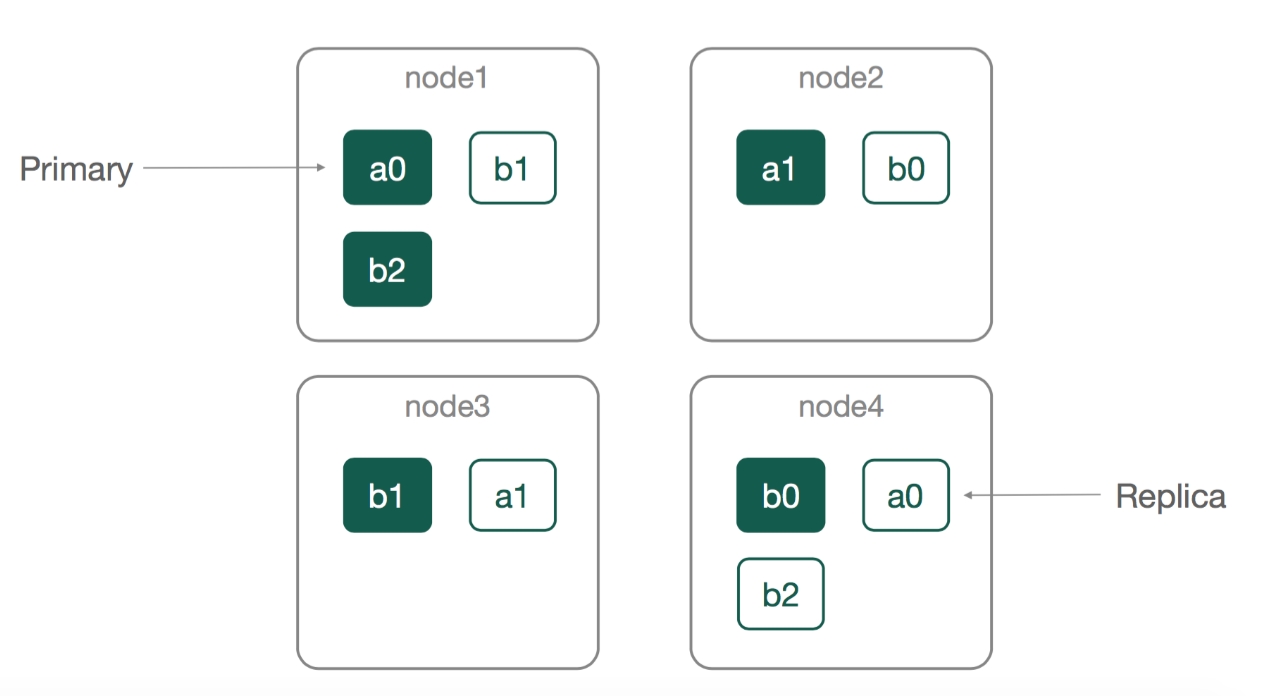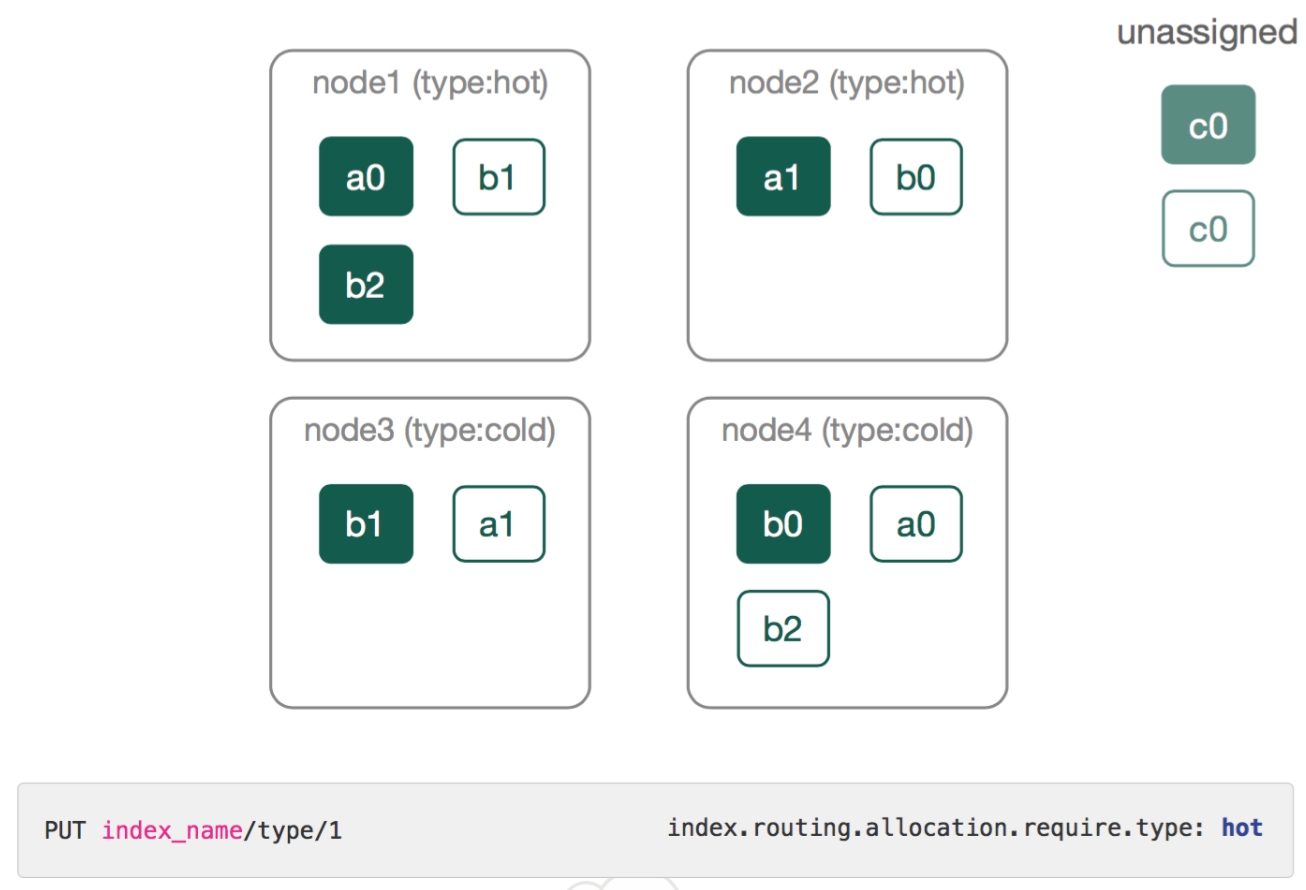ES Index 如何被建立
進入此章節的先備知識
初步了解 Elasticsearch 的 Cluster 與 Shards。
此章節的重點學習
Elasticsearch 的 Index 是如何被建立,在 Cluster 中是如何運作。
當我們建立好一個 Elastic Cloud 的 Deployment 之後,下一步就是要建立 Index,但是 Index 建立時的底層是如何運作的呢?
Elasticsearch Index 的建立
假設有一組擁有 4 個 Nodes 的 Elasticsearch Cluster:
index:
a, shard: 2, replica: 1 (有a0,a1兩個深色的 primary shard, 另各有一份白底的 replica shard)index:
b, shard: 3, replica: 1 (有b0,b1,b2三個深色的 primary shard, 另各有一份白底的 replica shard)

當我們要建立一個新的 Index c 時,Elasticsearch 會執行以下幾個檢查的步驟:
Shard 分配決策者 (Allocation Deciders)
計算每個 node 身上的 shard 數量,盡可能的以數量來平均分配,決定新的 primary shard 要放在哪個 node 身上。
檢查是否有些 filter 條件,例如當 node 有宣告 hot/warm architecture 的 attribute 時,會過濾掉不應該被存放的 nodes,例如新的資料只能被放在有宣告
hotattribute 的 node 身上。

檢查磁碟空間是否充足,如果已達到
cluster.routing.allocation.disk.watermark.low設定的水位,則不會將新的 shard 放在該 node 身上。

檢查是否有設定 Throttling,例如
indices.recovery.concurrent_small_file_streams和indices.recovery.concurrent_file_streams的設置是否達到,而是否要暫緩目前 create index 的動作。
Primary Shard 初始化
若 Shard Allocation Decider 一切順利,將會進行 Primary Shard 的初始化:
在 Cluster 狀態中,標示這個 Index 的 Primary Shard 會被分派到哪個 node 身上,並標示狀態為
Initializing。該 Index 存在的 node 收到動工的通知後,開始建立空白的 Lucene index,並且回報 Cluster master node 處理完成。
Cluster master node 收到處理完成時,會將這個 shard 的狀態標示為
started,並且通知 cluster 中的大家這個狀態,而這個存在此 pirmary shard 的 node 也收到 master node 的通知時,就會將這個 shard 的狀態設定成started,這時就能提供 indexing 的處理了。
Replica Initialization
當我們 Primary Shard 正常運作之後,Cluster 會檢查目前 replica 的設定是否滿足,若是有需要執行 replica 的複制則進行下列步驟:
決定 shard 應該放在哪一個 node 身上,通知這個 node 要做事,並且標示這個 shard 為
Initializing。收到通知的 node 為此 shard 建立空白的 Lucene index。
一律從 primary shard 複制資料到 replica shard,並且在完成之後通知 master node。
Master node 將這個 shard 的狀態改為
started,並且通知 cluster 中的大家。收到 master node 通知時,存放 replica shard 的 node,將 shard 的狀態開啟提供服務。
到此階段,這個 Index 算是完成了被建立的這個流程,也開始能正常的提供服務了,下一步就是將要 indexing 進 Elasticsearch 的文件準備好吧!
參考資料
Last updated